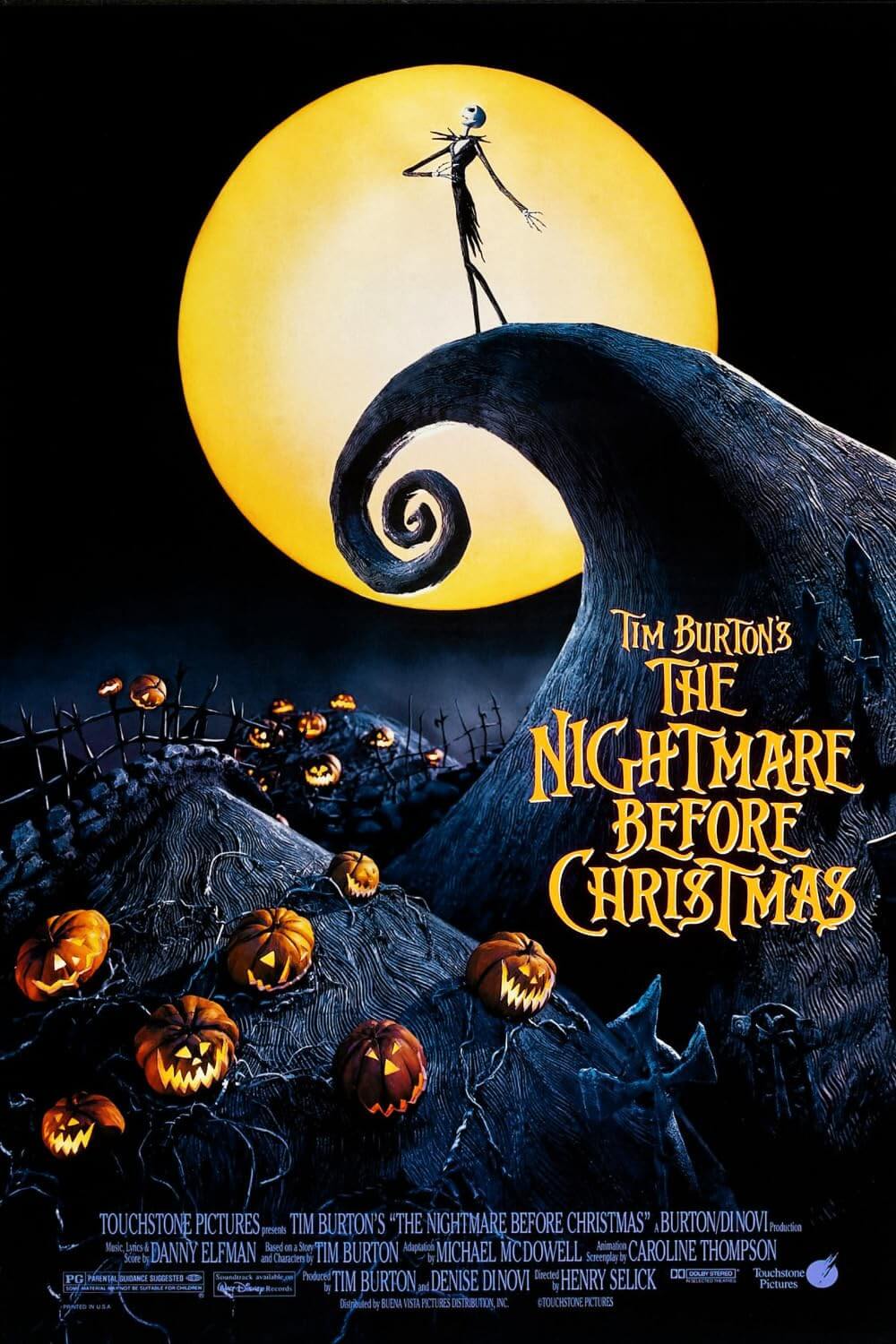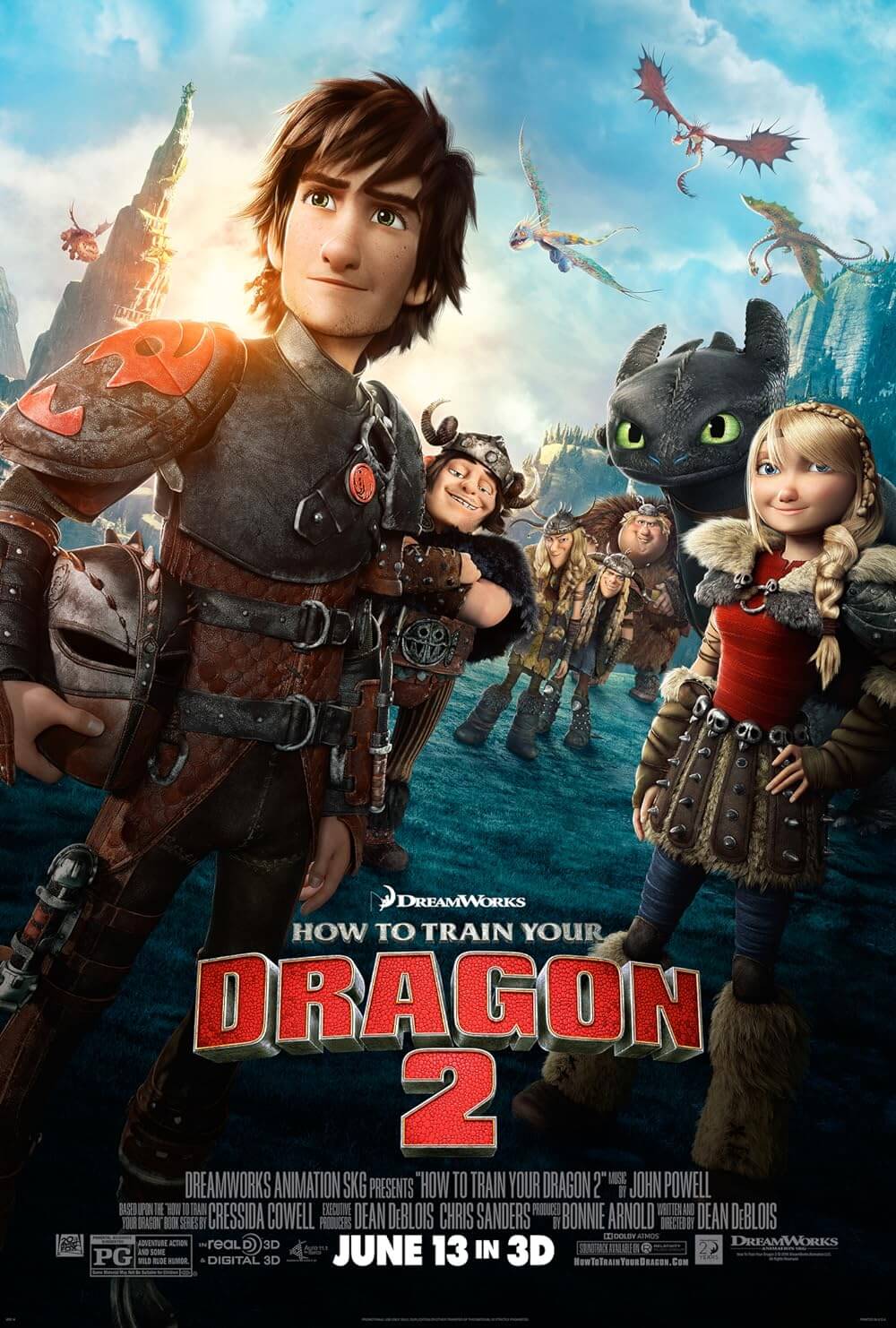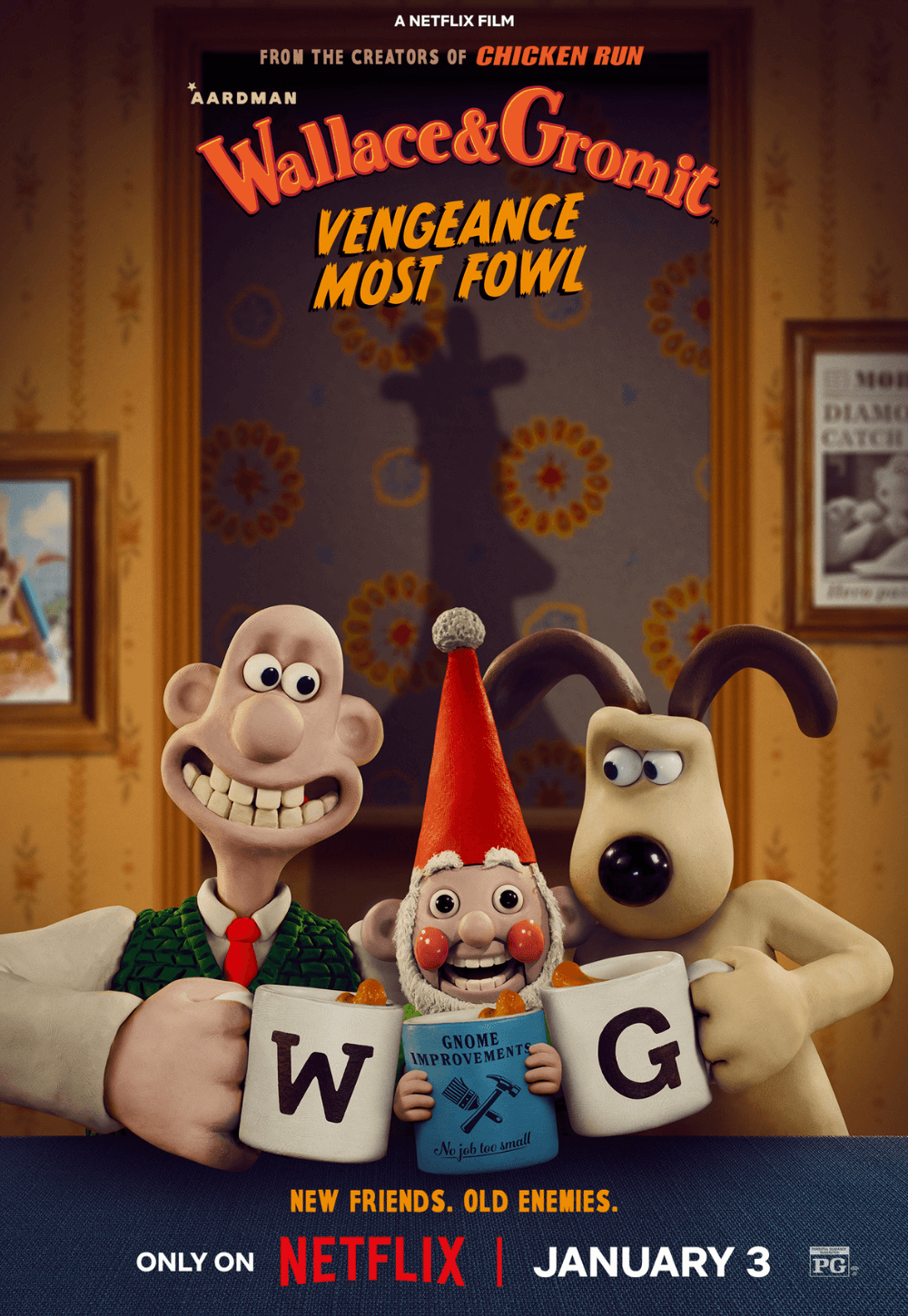Reader's Choice
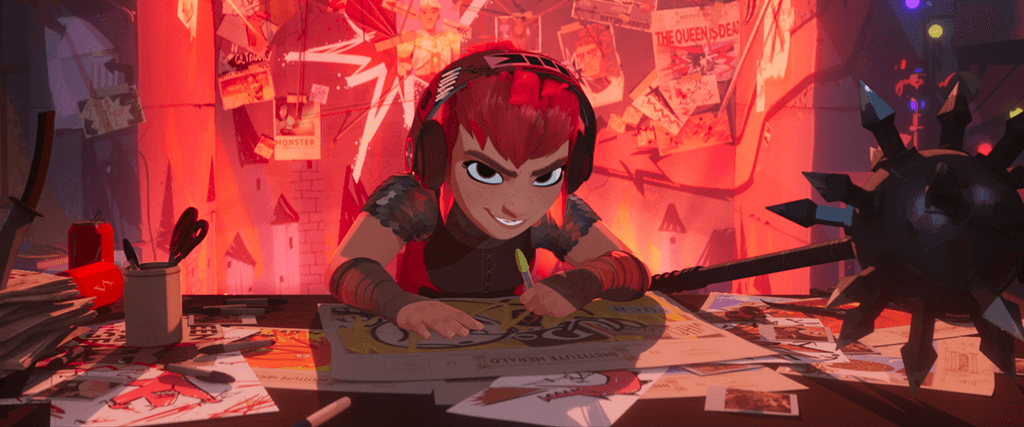
Nimona
By Brian Eggert |
A fairy tale set in a techno-medieval world, where armored knights occupy the same space as smartphones, flying ships, and curly fries, Nimona is an inspired blend of genres and ideas, delivered with a punkish voice. Central to the story is the shape-shifting miscreant Nimona, voiced by Chloë Grace Moretz, a sprightly antihero who embraces a “metal” attitude of wanton destruction, rebellion, and a vision board she calls a “murderwall.” She’s a firebrand outsider in otherwise orderly surroundings, which are so dependent on traditions that its warriors still look like the stuff of Arthurian legend, apart from the presence of laser guns, flat-screen televisions, and the matriarchal society. Longtime storyboard artists Nick Bruno and Troy Quane direct their second feature—after Spies in Disguise (2019)—delivering a Netflix original that’s edgier and, ultimately, more affecting and socially conscious than most other disposable animated titles. With fast-paced storytelling that leads to a moving finale, Nimona celebrates difference and challenges orthodoxy, imparting a lesson that conventions should be questioned and not blindly followed.
A fairy tale set in a techno-medieval world, where armored knights occupy the same space as smartphones, flying ships, and curly fries, Nimona is an inspired blend of genres and ideas, delivered with a punkish voice. Central to the story is the shape-shifting miscreant Nimona, voiced by Chloë Grace Moretz, a sprightly antihero who embraces a “metal” attitude of wanton destruction, rebellion, and a vision board she calls a “murderwall.” She’s a firebrand outsider in otherwise orderly surroundings, which are so dependent on traditions that its warriors still look like the stuff of Arthurian legend, apart from the presence of laser guns, flat-screen televisions, and the matriarchal society. Longtime storyboard artists Nick Bruno and Troy Quane direct their second feature—after Spies in Disguise (2019)—delivering a Netflix original that’s edgier and, ultimately, more affecting and socially conscious than most other disposable animated titles. With fast-paced storytelling that leads to a moving finale, Nimona celebrates difference and challenges orthodoxy, imparting a lesson that conventions should be questioned and not blindly followed.
While this theme can sometimes feel omnipresent in today’s animated features, which usually contain lessons about individuality and nonconformity, Nimona does so with a buzzing momentum and involving narrative. When Ballister Boldheart (Riz Ahmed), the first commoner in The Kingdom to be knighted, is falsely accused of murdering the Queen, he goes on the lam. However undeserved, Ballister’s notorious reputation earns him the attention of Nimona, an outcast whom he sees as a roguish nuisance at first. And even though her ability to morph into various animals—a rhinoceros, mouse, bird, whale, gorilla, etc.—startles Ballister, Nimona, though seen as a monster within The Kingdom, believes him when no one else will. She becomes his manic pixie sidekick, determined to overthrow or at least expose the government that has unjustly condemned him. Though, her ability to transform isn’t limited to animals; a sequence where Nimona becomes a demonic boy proves riotous. Ballister, not born of noble blood, can relate to her rebellious streak. He may as well be a monster in the eyes of the new leader, the Director (Frances Conroy), who marshals The Kingdom’s knights to hunt down the accused assassin and restore order.
From moment one, Nimona doesn’t look like today’s average computer-animated features. A prologue set 1,000 years ago resembles the flat, vibrantly colored worlds of Cartoon Saloon (Wolfwakers, 2020) or, if you prefer, their regular source of inspiration: artist Eyvind Earle. But then the story proper adopts a graphic-novel-come-to-life appearance, with bold, distinct lines, 3D cel-shading, and hyperactive energy. The film’s elaborate details recall everything from The Lord of the Rings to Blade Runner in its allusions, though with a pointed and symbolic use of color and shape. Note how everyone aligned with The Kingdom occupies flatter, cooler colors and angular designs, suggesting their adherence to their leader’s inflexible ideology. By contrast, Nimona’s rounded, salmon-colored animal shapes pop in every scene, suggesting her fluid and distinct identity amid the prevailing sameness. Capable of changing her identity as the mood or need arises, Nimona questions everything, and her visual style embodies this trait, as do the soundtrack choices—Judas Priest’s “Breaking the Law” blares in one hilarious sequence.
Following Ballister and Nimona’s mission is plenty entertaining, but soon, Nimona’s initially defiant attitude leads to a late-movie reveal about her tragic past, lending her a powerful backstory. By shedding light on Nimona’s origins, the storytellers establish The Kingdom as an entire culture rooted in destroying perceived monsters. When hunted and pushed to the brink, Nimona’s emotional state turns her into a mass of pain personified—a towering black kaiju bent on destroying the walled metropolis. The development recalls a similar one in ParaNorman (2012), where a misunderstood child is perceived to be a monster, and her ostracization compels her to lash out. Nimona asks what it means to be a monster, and who defines monstrosity. The concept of a monster is a social projection, and once you recognize that society itself is a construct, the notion of monsters will disappear—that’s the hope, anyway. The film also suggests that, if you keep treating people like monsters, they may respond by becoming one.
Nimona started as a design school project by ND Stevenson, followed by a Tumblr comic, and eventually, an award-winning graphic novel published in 2015. Almost immediately, Stevenson’s creation earned the attention of Hollywood, with 20th Century Fox’s subsidiary Blue Sky Studios stepping in to adapt the material into a feature. But with Disney acquiring Fox in 2019 and canceling many of its productions, Nimona became a casualty of Disney’s unwillingness to portray LGBTQ+ themes and characters. Then, Annapurna Pictures teamed with Netflix to rescue the mostly completed production, delivering a feature that doesn’t conform to Disney’s banal models of PG-rated representation. Indeed, according to Blue Sky employees, the issue for Disney was that Ballister is gay and in a relationship with another knight, the wonderfully named Ambrosius Goldenloin (Eugene Lee Yang). The detail factors into the narrative given how Ballister feels betrayed when Ambrosius, too, suspects that he killed the Queen. But otherwise, it’s a minor flourish in the overall proceedings, and to pass on the production in part or whole because of this is contemptible.
Adapted by a committee of writers—including credited screenwriters Robert L. Baird and Lloyd Taylor, along with seven writers who receive “Story by” credit—Nimona nonetheless feels cohesive and thoughtfully arranged. While The Kingdom’s heroic myths have been written to normalize humanity and demonize non-normative identities, by the finale, there’s an acceptance and appreciation of Nimona’s individualism. The theme embraces the beauty of a multifaceted identity capable of maneuvering from one state to another, as opposed to seeing only a schism, thus encouraging a look beyond surfaces, labels, and traditions. If this notion has been thoroughly explored in films such as Ratatouille (2007) and Brave (2012), never has an animated film represented gender dysphoria so well, with Nimona’s description of “itchy insides” suggesting her desire to change, even though the world looks down on her for doing so. Mixing an array of animation styles and genre types in a manner that echoes its themes and titular character, Nimona is smart, fun, and sensitive.
(Note: This review was originally posted to Patreon on February 8, 2023.)
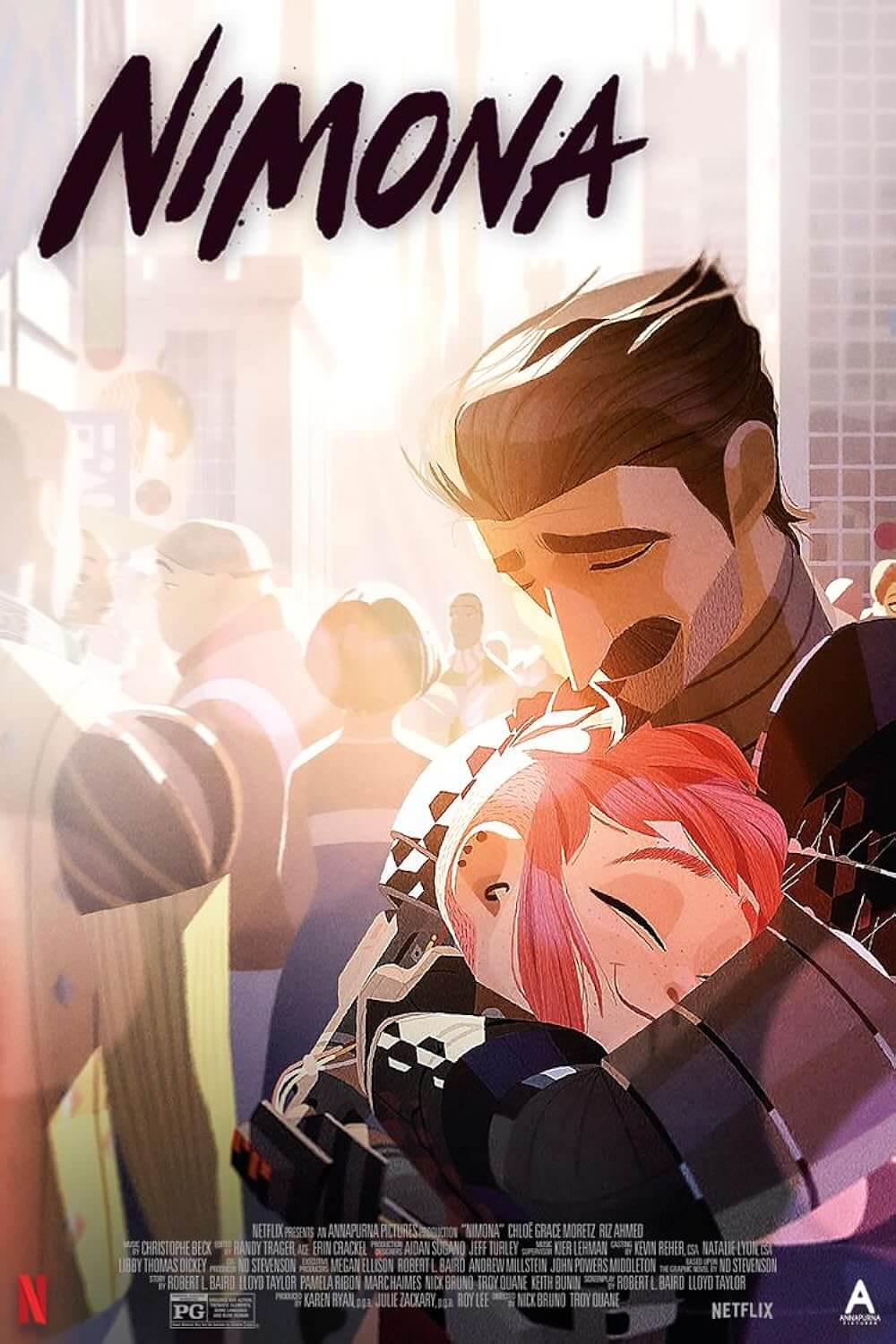
Thank You for Supporting Independent Film Criticism
Thank you for visiting Deep Focus Review. If the work on DFR has added something meaningful to your movie watching—whether it’s context, insight, or an introduction to a new movie—please consider supporting it. Your contribution helps keep this site running independently.
There are many ways to help: a one-time donation, joining DFR’s Patreon for access to exclusive writing, or showing your support in other ways. However you choose to support the site, please know that it’s appreciated.
Thank you for reading, and for making this work possible.
Brian Eggert | Critic, Founder
Deep Focus Review


